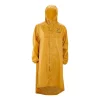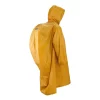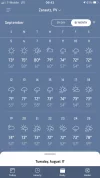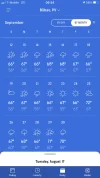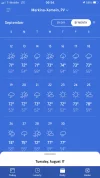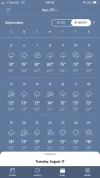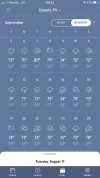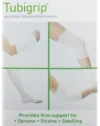I do not argue personal choices, which are a subjective thing. . . what someone likes is not arguable. Some folks like liver and onions, others hate both. I will just point out some things that are objective considerations:
Some ponchos are bulky, but not all of them, and certainly not the ones I recommend. Frogg Toggs ponchos when weighed are around the 6-ounce mark. They are made from a 'breathable' material that is proprietary to the company that manufactures Frogg Toggs. They can be had for $10 to $25, so these ponchos are a HUGE bargain for a highly functional piece of rain protective gear.
If I use my Zpacks poncho, it weighs just a bit more than 3.5 ounces and is tough as nails. Nowadays, I most frequently take my Frogg Toggs.
A poncho is far more easily deployed. Since I can pull it out of the side pocket of my backpack and slip it on over my head and my backpack, I do not even have to stop. I usually do pause for the ten seconds it takes to put on, though, because I am a bit clumsy.

I do not need to take my backpack off, put on a rain jacket, put the backpack back on. This is a huge factor for me when it rains off and on during the walk, as is often the case. Periodic sprinkles and showers can eat up a lot of time and energy with a rain jacket IF you take it off and put it on based on the immediate conditions.
With a poncho, I can respond to conditions within seconds. I can whip off the poncho as soon as the rain has slowed or stopped, and not question "should I wait to see if it starts back up?" Keeps condensation way down.
Ponchos also create more airflow which also helps deal with interior condensation from sweat. Because it is worn over the backpack, it creates air space that allows better ventilation.
A poncho can work equally as well, and even more flexibly, as an outer layer. The same quickness to deploy and remove a poncho works well in trying to avoid unexpected wind chill. And if the morning is cool as I start to walk, but I know I will be warm after a short walk, simply putting the poncho on for a few minutes and then whipping it off works well to avoid overheating.
Windy or breezy conditions are dealt with by the use of ties which will keep a poncho from blowing around. My ponchos are modified to include simple cordage attached to each side of the poncho and velcro'd when not in use.
On the aesthetics side, rain jackets do have the edge. . . depending on if form is a factor with regard to function.
Aside from it's main function, ponchos are also multi-taskers
- A shelter lean-to. (A bit of cord and trekking poles make it even more independent in setting up.)
- A sun shelter, it can be rigged up to provide you shade in hot climates.
- Ground cloth: Under a tent, or a survival shelter, a poncho can protect you from the damp ground. If you are in a cold damp climate, this can help you stay warm.
- Wind Break: While a poncho without the liner does not have much insulating qualities, you will be warmer if you wrap up in the poncho in windy weather, this will help protect you from wind chill.
- Privacy -- great emergency privacy screen when needing to do a 'nature break' and natural coverage of bushes or tall grass is scarce. It also works when needing to change pants or shorts.
- Sit pad when taking a break and sitting surfaces are damp or dirty.
- Mattress cover.
- Can make an emergency backpack or carryall.
- Windshell to add a bit of extra warmth to layers. Great for cool, early mornings when you need something that can be quickly removed after you have warmed up from walking.
Those are my preferences and thoughts. YMMV









